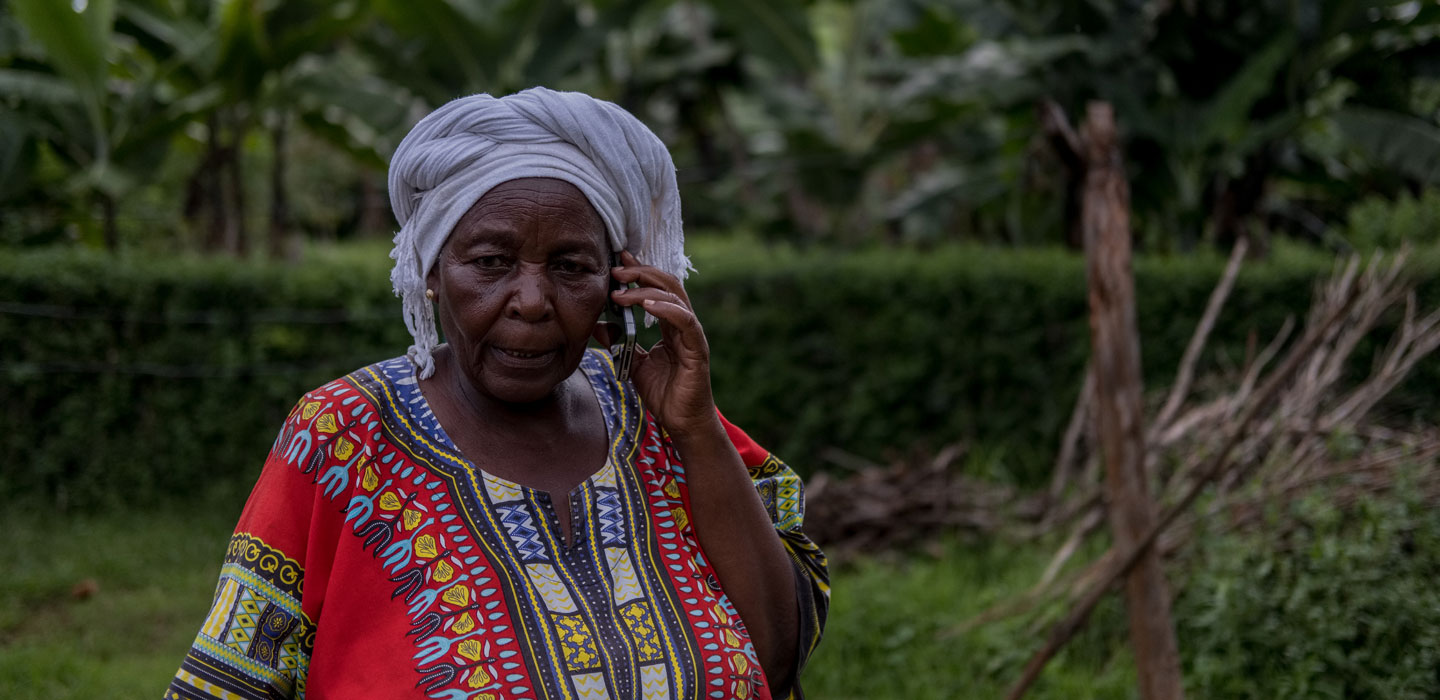Digital information service helps small-scale farmers respond to COVID-19
IFAD Asset Request Portlet
Asset Publisher
Digital information service helps small-scale farmers respond to COVID-19
Estimated reading time: 3 minutes
Access to accurate and timely information is crucial for farmers all around the world, and even more so during the COVID-19 pandemic. Many farmers rely on digital services, especially those delivered through platforms accessible via mobile phones, to access this information. But for many small-scale farmers in rural and remote areas, this kind of access remains a challenge.
This is especially true in Kenya. The majority of Kenyans own at least a basic mobile phone and are therefore able to receive communications like simple text messages. However, digital support for small-scale farmers remains patchy, and in some cases is non-existent.
Last spring, as movement restrictions and other safety measures took hold across Kenya, the Kenya National Farmers’ Federation (KENAFF) created a mobile phone–based information service as a way to respond to the crisis and keep farmers better informed.
“With everything closed and everyone in lockdown, we needed to find a way to reach out to our members and the farmers in general,” explains Dr Mwendah M'Mailutha, CEO of KENAFF.
Information at your fingertips
In March of last year, KENAFF began work on their information service. From the beginning, they knew it needed to be accessible to all – that is, it would need to operate via technology that even non-smartphone mobile phones could handle with ease.
To build the platform, KENAFF joined forces with the Andreas Hermes Akademie, an agricultural agency that forms part of the global AgriCord alliance and is supported by the European Union and the IFAD-funded FO4ACP programme. The Akademie’s technical and financial support was invaluable during the development stages.
Ultimately, KENAFF and its partners decided to make use of the USSD (Unstructured Supplementary Service Data) protocol for the platform. With this method, the service operator can push text-based messages to users’ phones based on an input code. It’s the same kind of technology used by many mobile network operators for simple real-time information queries, such as checking one’s available mobile phone balance.
The service, known as the KENAFF USSD Code Platform, officially launched in October 2020. It delivers USSD-based messages containing information on a wide range of topics, from COVID-19 mitigation measures, to technical advice, to suggestions for adaptation and resilience-building, to the latest information on market conditions and weather patterns. To ensure the necessary level of accuracy for weather predictions and market fluctuations, all information is localized to the sub-county level.
To ensure the messages deliver high-quality information, KENAFF draws upon expertise from many different fields. Its in-house agricultural specialists provide content for technical advice, and its field offices throughout the country contribute up-to-date market information every other day. KENAFF also partners with several other national ministries and organizations to receive additional input. The Kenya Agricultural Observatory Platform, for example, provides weather data, and the Kenya Agricultural & Livestock Research Organisation supplies the latest research results.
Keeping farmers informed, one text at a time
Once subscribed to the platform, users receive four push messages per week. Users can respond to the messages with specific codes to request further information, or they can form their own questions and send them in via text message. If many users within a county ask the same question, the service shares the answer with all subscribers in the county. Subscribers also have the chance to send their questions directly to KENAFF’s advisory services and receive a personalized answer.
The question-and-answer functionality has been incredibly popular with users, to the point that KENAFF is considering changes to their approach to make the platform more effective. To date, most of the questions they receive are on market information, COVID-19, and technical advisory services.
A large part of this work involves conveying complex technical information to its subscribers in plain language and in a way that’s suitable for the text-message format. “It is important that we translate the information into language that the farmers will understand,” explains Dr M’Mailutha. “That makes the platform more accessible.”
Currently the system has around 72,000 registered users across 47 counties of Kenya. KENAFF hopes to register over a million users by the end of 2021. As part of this expansion, KENAFF plans to establish more USSD codes on additional broadband networks throughout Kenya, which will extend the service’s reach to a greater number of farmers. They expect that up to three million farmers are potentially reachable with the service within the next several years, and as they continue their work to grow the platform, KENAFF are looking to develop other mobile apps as well.
- Read more about the KENAFF USSD Code Platform.
- Learn more about IFAD's work in Kenya.